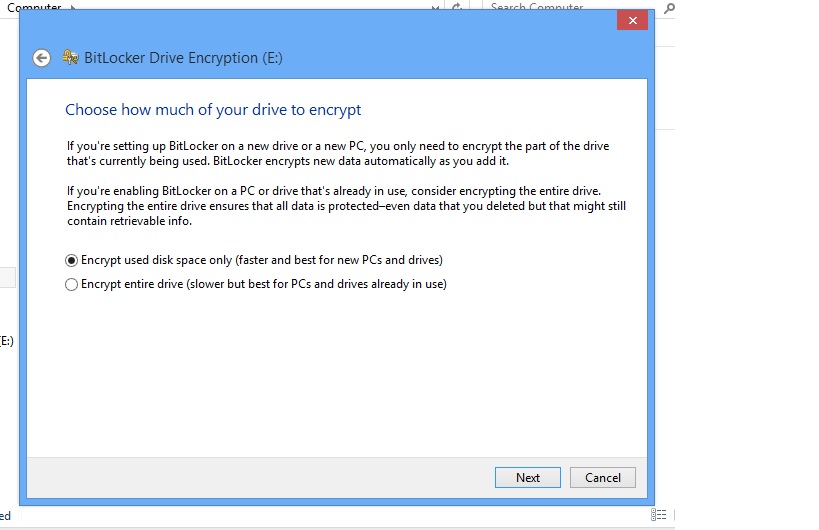

Enhanced PIN: The user has to enter an alphanumeric Pin to unlock the key.PIN: Create a secure numeric PIN code that must be entered during pre-boot.TPM: The TPM secures a root of trust while protecting the BitLocker recovery key.BitLocker uses the following safety measures to secure the recovery key. It doesn't matter how many bits the encryption is if the key isn't protected. If you're using BitLocker on Windows 10 or higher, you can choose an even more advanced encryption known as the XTS-AES encryption algorithm. Both options are incredibly powerful and secure and nearly impossible to hack. You have the option of using 128-bit or 256-bit, which determines the length of the encryption key. Your data is encrypted with Advanced Encryption Standard (AES). User authentication mode: Before the computer boots, you must enter your authentication credentials, such as a PIN or password, to decrypt the OS and access your data.The operating system won't boot up if you don't connect the USB drive to the computer. USB Key Mode: The USB drive stores the encryptions key.This all takes place in the background and doesn't require that you do anything. The encryption key is stored in the TPM and will only decrypt the operating system and the loader code if there are no modifications to the early boot files. Once it's installed, you can boot up your computer without doing anything special. Transparent Operation Mode: BitLocker connects with the TPM hardware to create a transparent user experience.You can access it through the Control Panel > System and Security > and then click on the Mange BitLocker option. After BitLocker is installed, the system drive should be at least 350 MB with 250 MB in free space.īitLocker is an easy-to-use software that is integrated with Windows Vista and higher. BitLocker won't run on this drive, must not be encrypted, and requires FAT32 formatting for UEFI devices or NTFS for computers with IOS firmware. The second drive is where the files necessary to load Windows are located. One of them is an NTFS file system that stores the OS and supports files. Multiple partitions on the hard drive: You must have a minimum of two drives available on the hard drive.If the computer doesn't have a TPM and you're using a flash or external hard drive, it doesn't need to be BIOS or UEFI compliant

BIOS or UEFI Firmware: The computer needs one of these Trusted Computing Group (TGC) compliant firmware to ensure a reliable chain of trust when the system boots up.TPM 1.2 or later: If your computer doesn't have the Trusted Platform Module 1.2 or higher, you will need to save the startup key on a flash drive or removable hard drive.


 0 kommentar(er)
0 kommentar(er)
